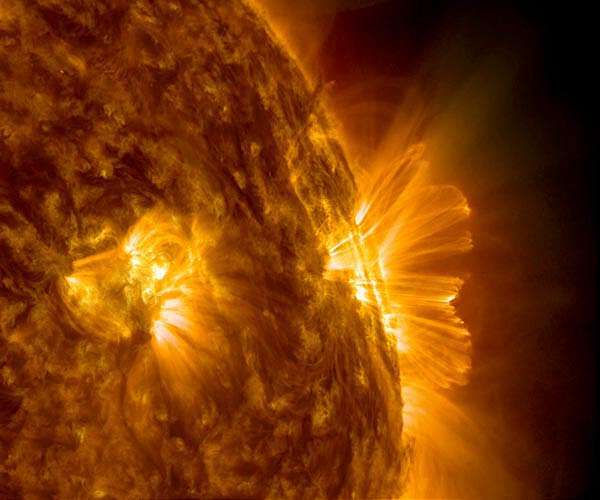27.11.2023

The Plasma Observatory mission is a seven-spacecraft mission that is poised to transform our comprehension of particle energization in the near-Earth plasma environment. This mission will delve into the crucial realms of plasma energization and energy transport by conducting simultaneous multiscale measurements within Earth's magnetospheric system.
The European Space Agency (ESA) has announced the selection of three prospective space missions. Among these missions, the Swedish Institute of Space Physics (IRF) takes the lead in managing the scientific instrument consortia for two projects: the Plasma Observatory and M-MATISSE. The forthcoming three-year "Phase A" which consists of comprehensive technical and scientific studies will be funded by the Swedish National Space Agency and ESA.
"The primary focus of both missions lies in unraveling the intricate coupling between the plasma environments enveloping planets in our solar system and the dynamic forces of space weather acting on these environments," says David Andrews, Assistant Professor at IRF Uppsala and PI of the COMPASS consortium on M-MATISSE.
Plasma Observatory: A Leap in Understanding Near-Earth Plasma Dynamics
The Plasma Observatory mission is a seven-spacecraft mission that is poised to transform our comprehension of particle energization in the near-Earth plasma environment. This mission will delve into the crucial realms of plasma energization and energy transport by conducting simultaneous multiscale measurements within Earth's magnetospheric system.
IRF will lead the consortia providing the Electric Field Instrument (EFI) and Fields and Wave Processor (FWP) on the main craft referred to as the "Mother", as well as contribute to the electric field instrument on the six less sophisticated "Daughters". This collaborative effort involves scientific institutes from Sweden, Czechia, France, Poland, the UK, and the USA.
"Plasma Observatory is the first multi-spacecraft mission with seven spacecraft, allowing us to study the interplay between the processes operating at different spatial scales. Europe was the first to launch a four-spacecraft mission with Cluster in 2000, and PO brings Europe back to the forefront of multi-spacecraft space exploration", says Prof. Yuri Khotyaintsev at IRF.
M-MATISSE: Unveiling Mars' Secrets through Dual Spacecraft Exploration
M-MATISSE (Mars-Magnetosphere ATmosphere Ionosphere and Space-weather SciencE) is a dual-spacecraft mission destined for Mars and is designed to study the intricate coupling between the planet's atmosphere and the space environment. The spacecraft, named Henri and Marguerite, will enter orbit around Mars, enabling simultaneous measurements of the plasma environment's composition, density, temperature, and magnetic and electric fields from two distinct vantage points.
IRF takes the lead in the Combined Magnetic and Plasma Sensor Suite (COMPASS) instrument consortium within M-MATISSE. The COMPASS consortium unites seven esteemed institutes from Sweden, Germany, France, Belgium, Czechia, and Poland.
"The M-Matisse mission will provide an opportunity to add value to the study on Mars that IRF has been tackling since the 1980s with Phobos-2 and Mars Express missions," says Yoshifumi Futaana, Assoc. Prof. at IRF.
The total budget allocated for the chosen mission, covering spacecraft and ESA activities, amounts to 550 million euros. National space agencies across Europe, including Sweden, as well as international collaborators will contribute scientific instruments and expertise to ensure the success of the mission.
IRF's crucial role as a key instrument provider and consortium manager in these ESA projects highlights the institute's success in advancing scientific frontiers and delivering substantial returns on Sweden's investment in ESA.
Quelle: SD

